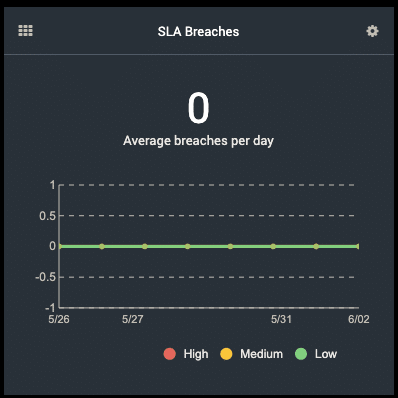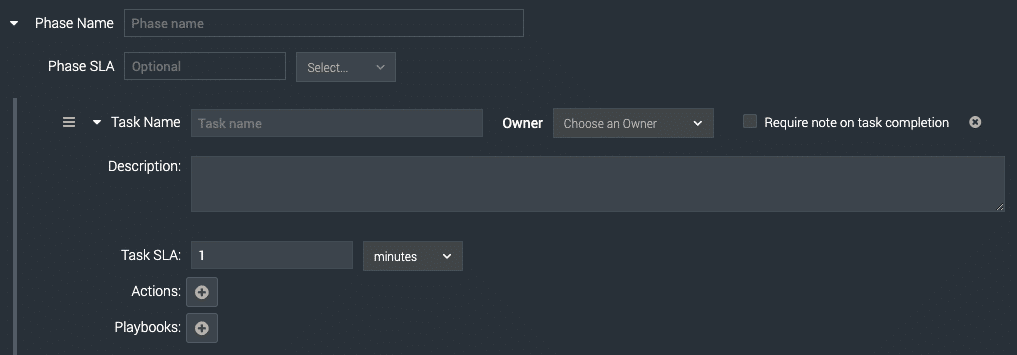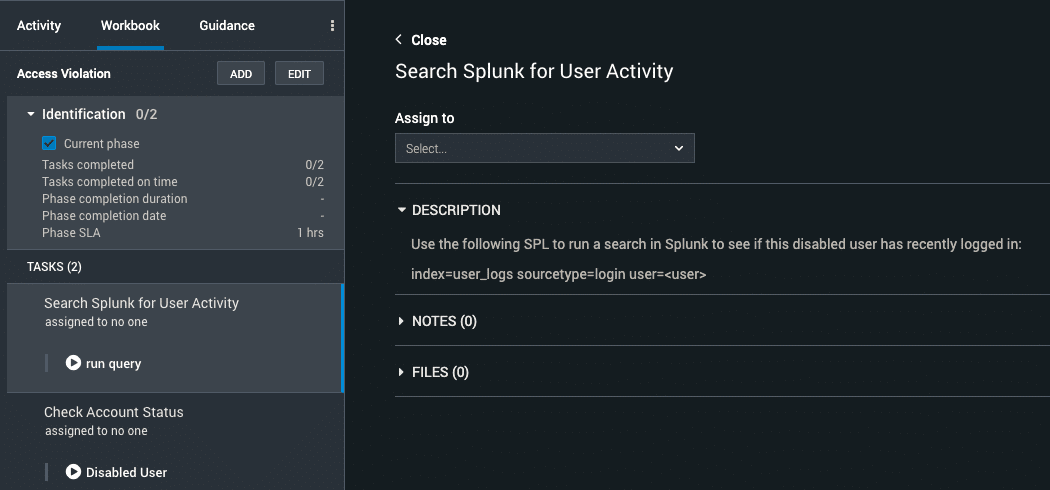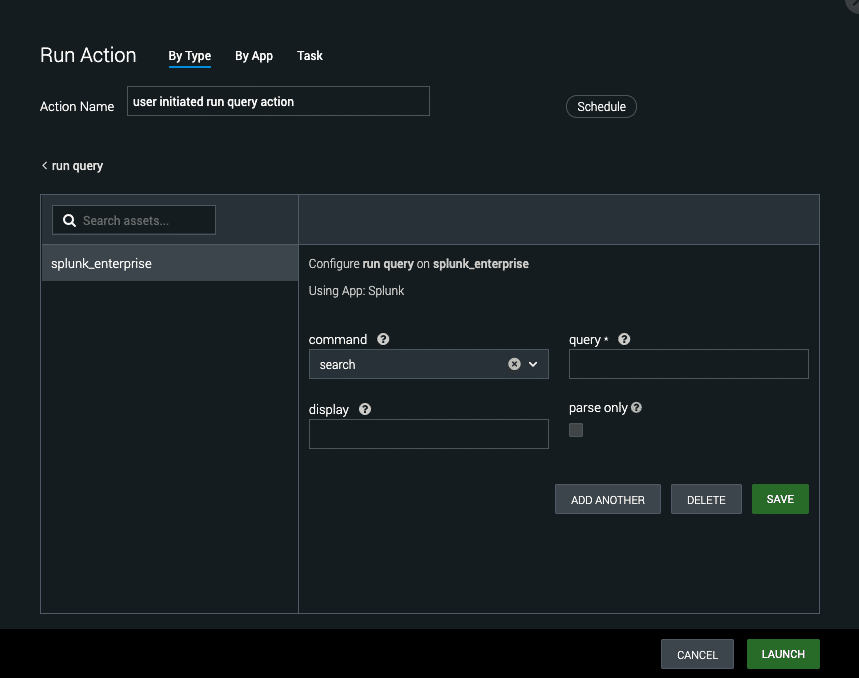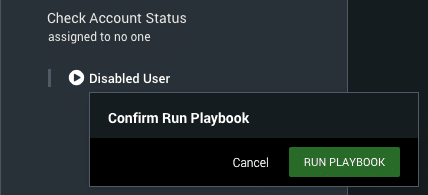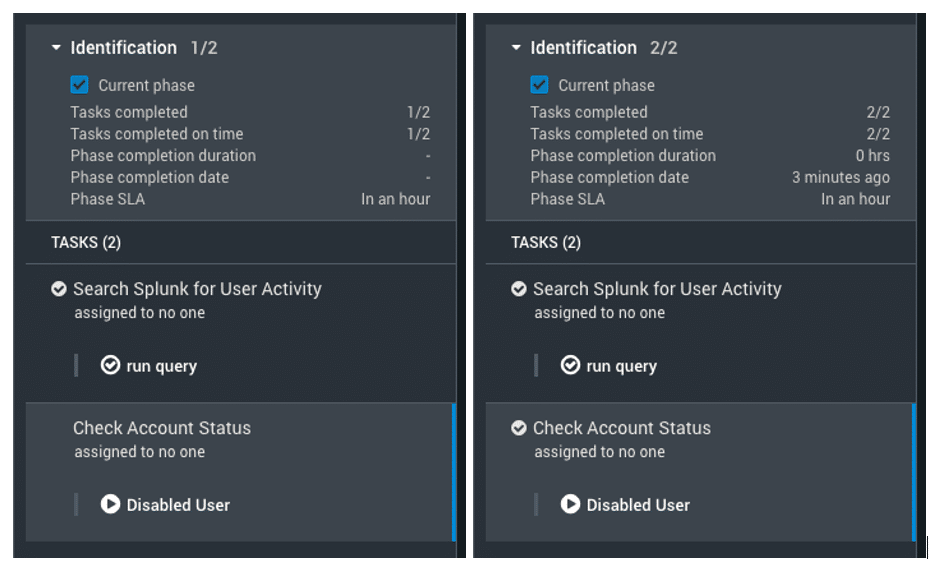Splunk Phantom Workbooks
By: Joe Wohar | Senior Splunk Consultant
Splunk Phantom is an amazing software used to automate cybersecurity processes, however, many companies do not know that they could also be using Phantom for case management. Arguably the most powerful, yet unknown to many, case management feature of Phantom is the ability to create and use workbooks.
If you’re familiar with Phantom, then you know that Phantom playbooks are repeatable processes that Phantom runs through against events. Phantom workbooks are repeatable, defined processes that analysts run through against events. However, they’re typically only used when an analyst needs to get involved. When an event is determined to be a threat that needs to be investigated by an analyst, the event should be promoted to a case. This can be done with a manual change done on the event (by clicking the toolbox icon button) or by having the conditions specified in a playbook that can then turn the event into a case.
Image 1: A workbook must be selected when converting an event to a case.
One of the biggest advantages of workbooks is that it’s a great way of ensuring that your analysts (new or old) are following the same set of steps when working cases. SOPs help define processes for your analysts to follow, but workbooks put those processes right into the case and make the work easily trackable. Workbooks are made up of 2 trackable components: phases and tasks.
Phases
Phases split the investigation into different sections, such as identification, acquisition, analysis, and reporting. Individual SLAs can be set for each phase of a workbook. When SLAs are missed/breached, there is a panel on the Phantom home page for tracking that:
Image 2: Home page SLA breach tracker.
Phases are made up of tasks, which are where the specific steps for investigations are listed.
Image 3: Adding new phases/tasks to a workbook.
Tasks
Tasks are very customizable, so they can be pretty general with few trackable requirements or be very specific with many tracked steps. First, tasks can have a default owner assigned to them, which could be useful if you want to have a “review” task so that a more experienced analyst can review a newer analyst’s work, however, I think most often you’d want to leave that blank so that tasks can be assigned to the analyst working the case. The description section of the task is where you can describe the specific things that should be done in the task. If you don’t want to track specific steps, you can simply use this section to create a list of steps for analysts to follow. However, if you have very specific steps involved in a task, you may want to use the description just for describing the process and then have the steps listed as actions or playbooks. This brings us to the next part of tasks, adding actions and playbooks.
Actions and playbooks are Phantom automation being added to the human process. The actions and playbooks added to a task are limited to the actions available in your configured apps and the playbooks that you have available in your Phantom instance. Then, when an analyst goes to run the action from the investigation screen, the action is already pulled up and they just need to enter the details.
Image 4: Workbook opened in a case with 2 tasks.
Image 5: Pop-up window from clicking the “run query” action in the workbook.
Running a playbook from a workbook is even simpler. Just click the playbook and click the “Run Playbook” button.
Image 6: Pop-up window from clicking the “Disabled User” playbook in the workbook.
As analysts move through the tasks and complete them, the phase’s tracker will be updated to show completion and whether or not tasks were completed on time and if the phase was completed on time.
Images 7 & 8: First task complete and then both tasks completed.
If you’re not using Phantom for case management, then you’re likely using Phantom to create tickets and add details to them in another software, which is costing you more in hardware and licensing. By using Phantom for case management, you’ll save the cost of another software and its hardware while using software you’ve already bought at no additional cost.
Not sure how to get started with workbooks? Try taking one of your best defined SOPs and make a workbook for it. If you’re not currently a Phantom customer and would like to try it out, you can download the OVA by registering here: https://my.phantom.us/
Want to learn more about Phantom workbooks? Contact us today!



